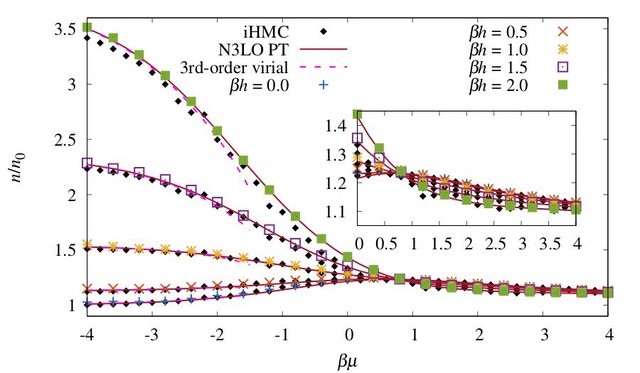Calculating the thermodynamics of polarized fermions (realized in nature as nuclei, cold atoms, and neutron matter) is one of the most challenging problems in quantum physics. It suffers from a pervasive issue called the sign problem, which makes probabilities complex and has prevented Monte Carlo calculations for decades. In a recent paper [1], UNC graduate student Andrew Loheac and his advisor Prof. Joaquín Drut continue the work they started in a previous project [2] (now in collaboration with Jens Braun from TU Darmstadt in Germany) by carrying out the first exploration of the thermal properties of polarized fermions in one spatial dimension using a complex version of Monte Carlo known as complex Langevin (CL). The successful comparison of the CL results with a variety of other methods (such as perturbation theory and the virial expansion) pave the way for realistic systems in higher dimensions, which are already underway (see e.g. [3]).
[1] A. C. Loheac, J. E. Drut, J. Braun, Phys. Rev. D 98, 054507 (2018). [2] A. C. Loheac, J. E. Drut, Phys. Rev. D 95, 094502 (2017). [3] L. Rammelmueller, A. C. Loheac, J. E. Drut, J. Braun, arXiv:1807.04664.


